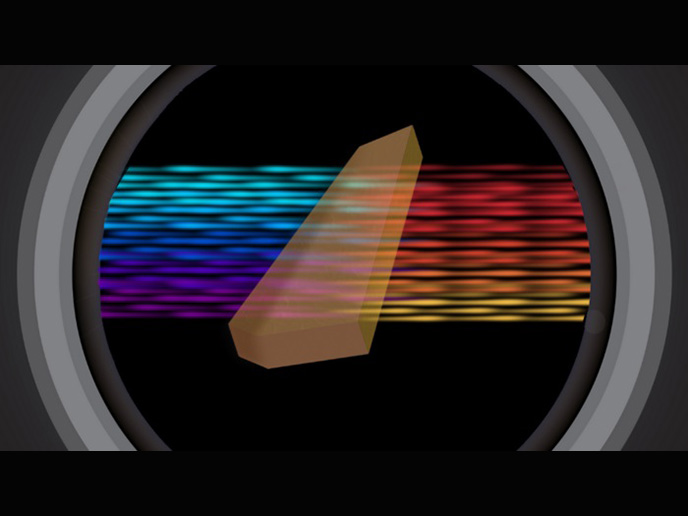Tiny colour converters bring small laser-based devices within reach
Lasers have become ubiquitous over the years. They are being put to good use in thousands of applications representing all parts of modern society, from medicine to law enforcement. Today’s devices are becoming more compact, resulting in components that are smaller. Laser processing is revolutionising semiconductor manufacturing, thus enabling smaller, thinner technologies. Thanks to researchers supported in part by the EU-funded GrapheneCore3 project, devices are on their way to becoming much smaller. “In the 60-some years since they were invented, lasers have absolutely transformed our lives,” comments Dr Giulio Cerullo, a nonlinear optics researcher at project partner Politecnico di Milano in Italy, in a news release posted on ‘EurekAlert!’
Demonstrating the potential of 2D materials
Together with a team of scientists at Columbia University in the United States, Dr Cerullo investigated a 2D material called molybdenum disulfide (MoS2). It is a promising material for substituting graphene and other semiconductor devices. They characterised how effectively devices developed from stacks of MoS2 under 1 micron thick convert light frequencies at telecom wavelengths to generate different colours. The research was published in the journal ‘Nature Photonics’. This work brings us one step closer to replacing the typical materials currently used in tunable lasers that are measured in millimetres and centimetres. “Nonlinear optics is currently a macroscopic world, but we want to make it microscopic,” states Dr Chiara Trovatello who recently completed her PhD in physics with Dr Cerullo at the Politecnico di Milano.
Shrinking laser-based devices to microscopic scales
Single layers of MoS2 can convert light frequencies efficiently, but they are too thin to build devices. The scientists fabricated the necessary crystals known as 3R-MoS2. Using 3R-MoS2, they tested how efficiently samples of varying thickness converted the frequency of light. The outcomes were astonishing from the very start. “Rarely in science do you start on a project that ends up working better than you expect—usually it’s the opposite. This was a rare, magical case,” explains James Schuck, an associate professor of mechanical engineering at Columbia. “I’ve been working on nonlinear optics for more than thirty years now. Research is most often incremental, slowly building on what came before. It’s rare that you do something completely new with big potential,” remarked Dr Cerullo. “I have a feeling that this new material could change the game.” GrapheneCore3 (Graphene Flagship Core Project 3) is bringing together 160 academic and industrial partners from 23 countries so that Europe does not fall behind in the graphene revolution. Overall, the aim is to help bring graphene innovations to the market by 2023. The project ends in September 2023. For more information, please see: GrapheneCore3 project website
Keywords
GrapheneCore3, laser, laser-based device, 2D, molybdenum disulfide, graphene, 3R-MoS2, light, nonlinear optics

